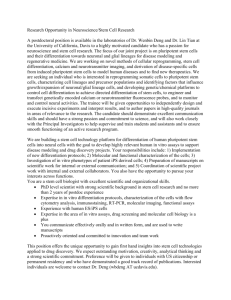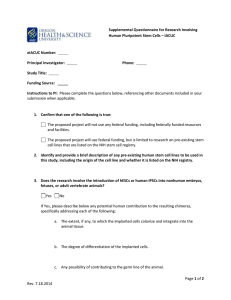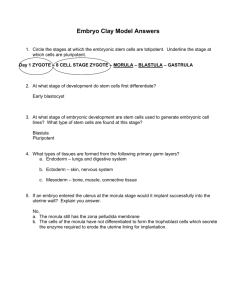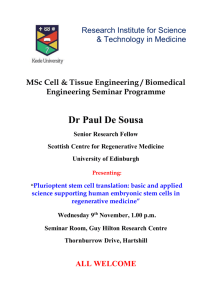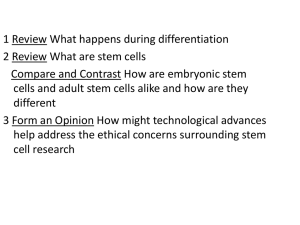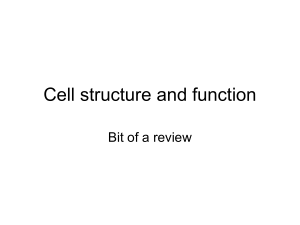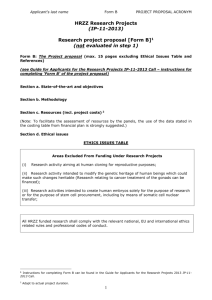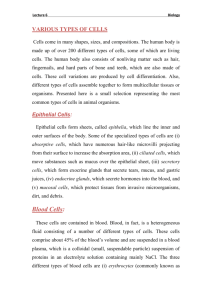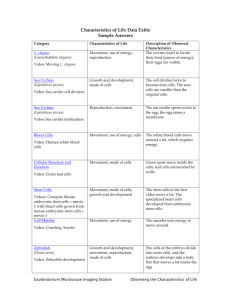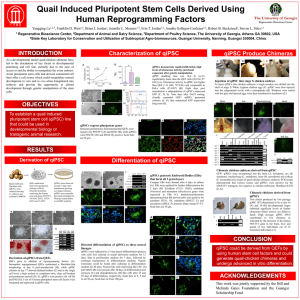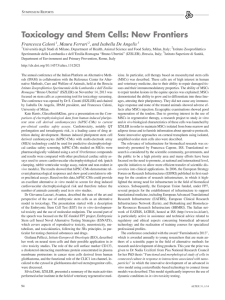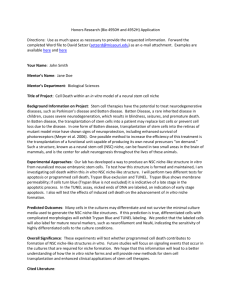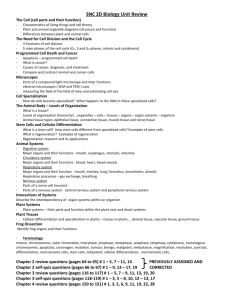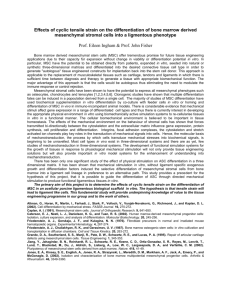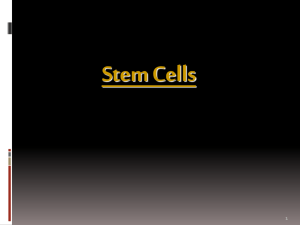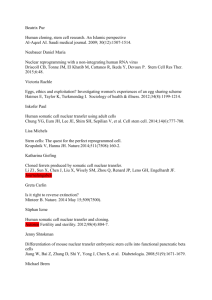Modeling the Development of Human Tissues In Vitro
advertisement
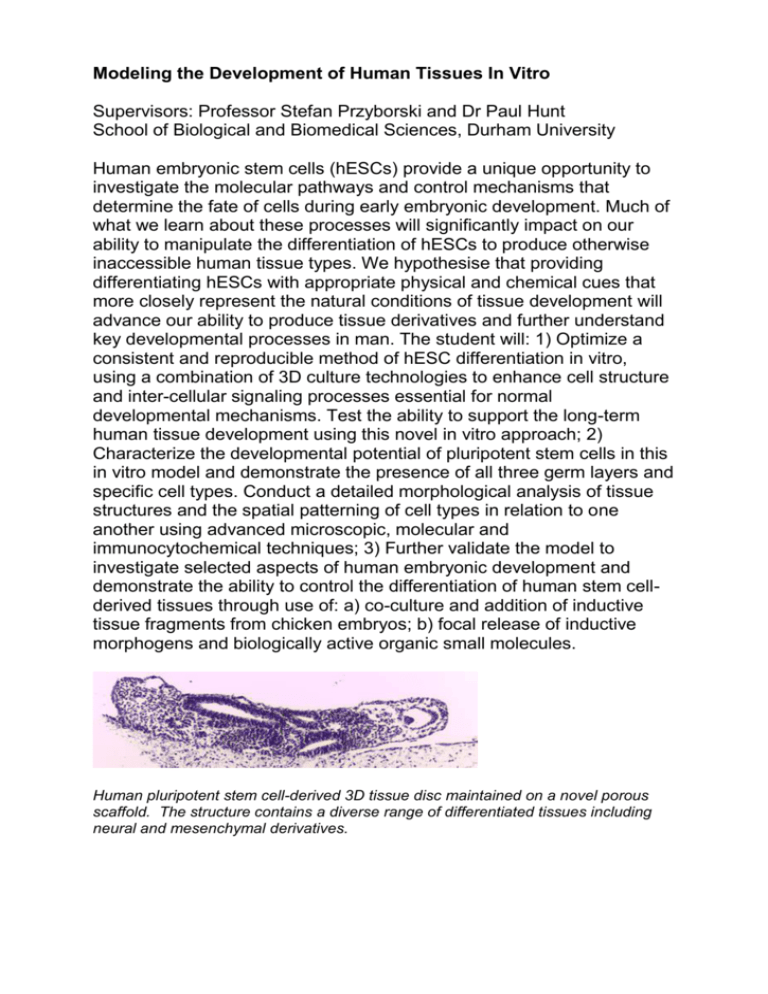
Modeling the Development of Human Tissues In Vitro Supervisors: Professor Stefan Przyborski and Dr Paul Hunt School of Biological and Biomedical Sciences, Durham University Human embryonic stem cells (hESCs) provide a unique opportunity to investigate the molecular pathways and control mechanisms that determine the fate of cells during early embryonic development. Much of what we learn about these processes will significantly impact on our ability to manipulate the differentiation of hESCs to produce otherwise inaccessible human tissue types. We hypothesise that providing differentiating hESCs with appropriate physical and chemical cues that more closely represent the natural conditions of tissue development will advance our ability to produce tissue derivatives and further understand key developmental processes in man. The student will: 1) Optimize a consistent and reproducible method of hESC differentiation in vitro, using a combination of 3D culture technologies to enhance cell structure and inter-cellular signaling processes essential for normal developmental mechanisms. Test the ability to support the long-term human tissue development using this novel in vitro approach; 2) Characterize the developmental potential of pluripotent stem cells in this in vitro model and demonstrate the presence of all three germ layers and specific cell types. Conduct a detailed morphological analysis of tissue structures and the spatial patterning of cell types in relation to one another using advanced microscopic, molecular and immunocytochemical techniques; 3) Further validate the model to investigate selected aspects of human embryonic development and demonstrate the ability to control the differentiation of human stem cellderived tissues through use of: a) co-culture and addition of inductive tissue fragments from chicken embryos; b) focal release of inductive morphogens and biologically active organic small molecules. Human pluripotent stem cell-derived 3D tissue disc maintained on a novel porous scaffold. The structure contains a diverse range of differentiated tissues including neural and mesenchymal derivatives.

